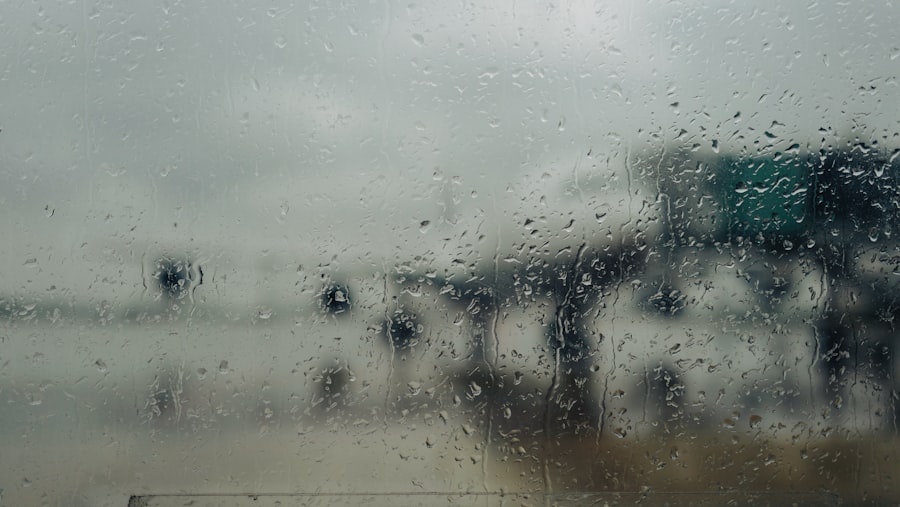The Drake Passage, a body of water situated between the southern tip of South America and Antarctica, is renowned for its tumultuous seas and unpredictable weather. Named after the English explorer Sir Francis Drake, who navigated these waters in the late 16th century, the passage serves as a critical maritime route for vessels traveling to and from the Antarctic region. Stretching approximately 800 kilometers (500 miles) in width, it connects the Atlantic and Pacific Oceans, making it a vital corridor for both commercial shipping and scientific expeditions.
The passage is not only significant for its geographical location but also for its unique ecological and climatic characteristics. Navigating the Drake Passage is often considered a rite of passage for adventurers and researchers alike. The waters are notorious for their rough conditions, which can change rapidly, creating a challenging environment for even the most experienced sailors.
Despite its reputation, the Drake Passage attracts numerous tourists each year, drawn by the allure of exploring one of the last frontiers on Earth. The combination of stunning landscapes, rich marine life, and the thrill of adventure makes this passage a captivating destination, albeit one that demands respect and caution from those who dare to traverse its waters.
Key Takeaways
- Drake Passage is a treacherous body of water located between the southern tip of South America and the northern tip of Antarctica.
- Unpredictable weather patterns in Drake Passage can lead to extreme conditions including strong winds, high waves, and rapidly changing temperatures.
- Sea travel through Drake Passage can be challenging and may result in seasickness and discomfort for passengers and crew.
- Safety precautions for navigating Drake Passage include securing loose items, wearing appropriate clothing, and following the instructions of experienced crew members.
- Despite its dangers, Drake Passage offers unique opportunities for scientific research and the chance to witness diverse wildlife and marine life.
The Unpredictable Weather Patterns
The weather in the Drake Passage is notoriously capricious, characterized by sudden shifts that can transform calm seas into raging storms within minutes. This unpredictability is primarily due to the unique geographical features surrounding the passage, including the convergence of cold Antarctic waters with warmer currents from the north. The result is a volatile climate that can produce high winds, towering waves, and dense fog, making navigation particularly treacherous.
Mariners often describe the experience of sailing through the Drake as akin to riding a roller coaster, with the potential for extreme conditions lurking just around the corner. Meteorological phenomena such as squalls and storms are common in this region, often leading to significant challenges for vessels attempting to cross.
As a result, sailors must remain vigilant and prepared for rapid changes in weather conditions. Understanding these patterns is crucial for anyone planning to navigate the Drake Passage, as they can mean the difference between a safe journey and a perilous ordeal.
Impact on Sea Travel

The unpredictable weather patterns of the Drake Passage have profound implications for sea travel. For commercial shipping routes, delays and detours are not uncommon due to adverse weather conditions. Vessels may find themselves rerouted or forced to wait for calmer seas before proceeding, which can lead to increased operational costs and logistical challenges.
Additionally, the passage’s reputation for rough waters has led some shipping companies to reconsider their routes altogether, opting for longer but safer alternatives that avoid the Drake. For adventure tourism, particularly cruises heading to Antarctica, the impact of weather on travel plans can be equally significant. Tour operators must carefully monitor forecasts and be prepared to adjust itineraries on short notice.
Passengers may find themselves experiencing unexpected changes in their travel plans, which can be both frustrating and exhilarating. The unpredictability of the Drake Passage adds an element of adventure to these journeys, but it also necessitates thorough planning and flexibility on the part of both operators and travelers.
Safety Precautions for Navigating Drake Passage
| Safety Precautions | Details |
|---|---|
| Weather Monitoring | Continuous monitoring of weather conditions to anticipate and prepare for any changes. |
| Life Jackets | Ensuring all passengers and crew wear life jackets while on deck or in rough seas. |
| Emergency Drills | Regular practice of emergency procedures such as abandon ship drills. |
| Experienced Crew | Having a skilled and experienced crew familiar with navigating challenging waters. |
| Sturdy Vessel | Operating a strong and well-maintained vessel capable of withstanding rough seas. |
Given the challenges posed by the Drake Passage’s unpredictable weather, safety precautions are paramount for anyone attempting to navigate these waters. Mariners are advised to equip their vessels with advanced navigation systems and weather monitoring tools to stay informed about changing conditions. Additionally, having a well-trained crew familiar with emergency protocols can make a significant difference in ensuring safety during turbulent times.
Life jackets, lifeboats, and other safety equipment should be readily accessible and in good working order. It is also essential for crews to conduct regular drills to prepare for emergencies such as man overboard situations or severe weather events. For tourists embarking on cruises through the passage, following safety briefings provided by tour operators is crucial.
Understanding how to respond in case of an emergency can help ensure that everyone remains safe while navigating this challenging environment.
Historical Incidents and Disasters
The Drake Passage has witnessed its share of historical incidents and maritime disasters that underscore its perilous nature. One of the most notable tragedies occurred in 1914 when the passenger ship SS Valencia sank after hitting rocks during a storm. The ship was caught in treacherous conditions that led to a loss of life for many aboard, highlighting the dangers that lurk within these waters.
Such incidents serve as stark reminders of the importance of respecting the power of nature when navigating this formidable passage. Another infamous event was the sinking of the MV Explorer in 2007, which was carrying tourists on an Antarctic cruise when it struck an iceberg. Although all passengers were safely evacuated, this incident raised awareness about the risks associated with travel in icy waters and prompted discussions about safety regulations in polar regions.
These historical events have shaped maritime practices and policies in the Drake Passage, leading to increased emphasis on safety measures and preparedness among vessels operating in these challenging waters.
Climate Change and its Effects

Climate change is having a profound impact on the Drake Passage and its surrounding environment. As global temperatures rise, melting ice from Antarctica contributes to rising sea levels and alters oceanic currents. These changes can exacerbate weather patterns in the passage, leading to even more unpredictable conditions than those already experienced.
The warming waters also affect marine ecosystems, with potential consequences for wildlife populations that depend on stable habitats. Researchers are increasingly focused on studying these effects in order to understand how climate change is reshaping the region. The data collected from expeditions through the Drake Passage can provide valuable insights into broader environmental trends affecting our planet.
As scientists continue to monitor changes in temperature, salinity, and biodiversity in these waters, they hope to contribute to global efforts aimed at mitigating climate change’s impact on vulnerable ecosystems.
Wildlife and Marine Life in Drake Passage
Despite its reputation for rough seas and unpredictable weather, the Drake Passage is home to a rich diversity of wildlife and marine life. The nutrient-rich waters support an array of species, including krill, which serves as a vital food source for larger animals such as whales, seals, and seabirds. The presence of these creatures makes the passage an important area for ecological research and conservation efforts.
Birdwatchers flock to the Drake Passage to observe various seabird species that thrive in this environment. Albatrosses, petrels, and skuas are just a few examples of birds that can be spotted soaring above the waves. Additionally, marine mammals such as humpback whales and orcas are often seen during migration seasons, providing thrilling encounters for those fortunate enough to witness them in their natural habitat.
The interplay between wildlife and ocean currents creates a dynamic ecosystem that captivates researchers and tourists alike.
Scientific Research Opportunities
The Drake Passage offers unique opportunities for scientific research due to its distinct ecological characteristics and its role as a gateway to Antarctica. Researchers from around the world conduct studies on marine biology, oceanography, and climate science in this region. The data collected during expeditions can provide valuable insights into how changing environmental conditions affect marine ecosystems and global climate patterns.
One area of focus is studying krill populations, which are crucial for understanding food webs in polar regions. Scientists also investigate ocean currents and their impact on climate systems worldwide. By examining sediment cores from the seafloor, researchers can gain insights into historical climate changes and their effects on marine life over time.
The Drake Passage serves as a natural laboratory for scientists seeking to unravel the complexities of our planet’s interconnected systems.
Tips for Travelers and Tourists
For travelers planning a journey through the Drake Passage, preparation is key to ensuring a safe and enjoyable experience. First and foremost, it is essential to choose a reputable tour operator with experience navigating these challenging waters. Researching reviews and testimonials can help travelers make informed decisions about their adventure.
Packing appropriately is also crucial; layers of clothing are recommended due to fluctuating temperatures and weather conditions. Waterproof gear is advisable for those who wish to stay dry while enjoying outdoor activities such as wildlife watching or photography. Additionally, travelers should familiarize themselves with safety protocols provided by their tour operators to ensure they know how to respond in case of emergencies.
The Beauty of the Passage Despite the Weather
Despite its reputation for harsh conditions, the Drake Passage possesses an undeniable beauty that captivates those who venture into its waters. The dramatic landscapes formed by rugged coastlines and towering icebergs create breathtaking vistas that leave lasting impressions on travelers’ minds. Sunrises and sunsets over the turbulent seas can be particularly stunning, casting vibrant colors across the sky.
The juxtaposition of wild seas against serene moments creates an atmosphere filled with awe and wonder. For many adventurers, witnessing nature’s raw power firsthand becomes an unforgettable experience that transcends any discomfort caused by rough weather. The beauty of the Drake Passage lies not only in its landscapes but also in its ability to evoke a sense of humility before nature’s grandeur.
Navigating the Unpredictable Waters of Drake Passage
Navigating the unpredictable waters of the Drake Passage requires respect for nature’s power and an understanding of its complexities. While challenges abound due to volatile weather patterns and historical incidents that serve as cautionary tales, there is also immense beauty found within this remarkable region. From its rich marine life to its opportunities for scientific research, the Drake Passage remains a vital area worthy of exploration.
For those willing to embrace both adventure and uncertainty, traversing this passage can lead to unforgettable experiences that highlight humanity’s connection with nature. As climate change continues to reshape our world, understanding and preserving this unique environment becomes increasingly important. Ultimately, navigating the Drake Passage is not just about crossing turbulent waters; it is about appreciating the intricate tapestry of life that thrives within them.
An article on MyGeoQuest delves into the unique meteorological phenomena of this region, highlighting how the convergence of the Atlantic, Pacific, and Southern Oceans creates a dynamic environment. For more detailed insights into the weather patterns and their implications on global climate, you can read the full article on the MyGeoQuest website.
WATCH NOW! Drake Passage: Earth’s Deadliest Waters Revealed
FAQs
What is the weather like on Drake Passage?
The weather on Drake Passage is known for being extremely unpredictable and can change rapidly. It is characterized by strong winds, rough seas, and frequent storms.
What are the average temperatures on Drake Passage?
The average temperatures on Drake Passage range from 30°F (-1°C) to 40°F (4°C) during the summer months and can drop to as low as 20°F (-6°C) during the winter months.
What are the wind conditions like on Drake Passage?
The wind conditions on Drake Passage are often very strong, with average wind speeds ranging from 30 to 40 knots. However, gusts can reach up to 70 knots during storms.
Are there frequent storms on Drake Passage?
Yes, there are frequent storms on Drake Passage, especially during the winter months. These storms can bring heavy precipitation, strong winds, and rough seas, making it a challenging area for navigation.
What is the best time to visit Drake Passage in terms of weather?
The best time to visit Drake Passage in terms of weather is during the summer months (November to March), when the temperatures are relatively milder and the sea conditions are calmer compared to the winter months.
